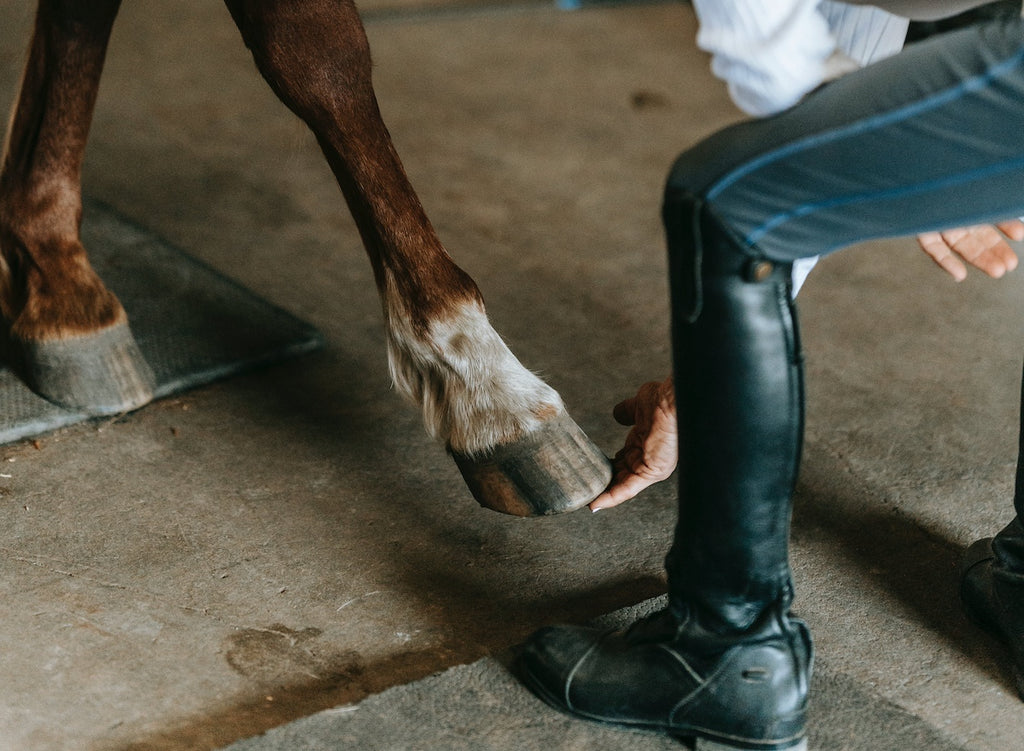The old adage "no hoof, no horse" stands as a testament to the critical role hoof health plays in the overall well-being and athletic ability of sport horses. A sport horse's performance is intricately tied to the condition of its hooves, making proper care and attention essential. In this guide, we'll delve into the world of hoof health, discussing care routines, the importance of regular farrier visits, and the far-reaching impact of robust hoof health on your equine athlete.
- Understanding the Hoof's Structure
Before we embark on the journey of care, it's crucial to understand the intricate structure of a horse's hoof. The hoof is essentially a complex, multi-layered structure that provides support, absorbs shock, and facilitates movement. Regular maintenance is necessary to ensure this structure remains strong and functional.
- Implementing a Consistent Care Routine
- Regular Cleaning: Clean the hooves daily to remove dirt, rocks, and debris. This simple practice helps prevent infections and provides an opportunity to inspect for any abnormalities.
- Trimming and Balancing: Regular hoof trims, usually every 4-8 weeks, are essential. Trimming helps maintain the proper length and balance of the hoof, preventing issues such as uneven wear and lameness.
- Moisture Management: Hooves need a balance of moisture. In excessively dry conditions, consider using hoof moisturizers, and in wet conditions, take measures to ensure the hooves don't become overly saturated.
- The Farrier's Role
Regular visits from a skilled farrier are indispensable to hoof health. A farrier is trained to assess the hoof's condition, trim it appropriately, and address any emerging issues. These visits not only contribute to the physical health of the hoof but also play a crucial role in preventing long-term problems.
- Impact on Athletic Performance
The state of a horse's hooves directly influences its athletic ability. Well-maintained hooves support even weight distribution, promote proper movement, and reduce the risk of injuries. Conversely, neglected hooves can lead to lameness, discomfort, and a decline in overall performance.
- Signs of Hoof Issues
Vigilance is key to identifying and addressing hoof problems promptly. Watch for signs such as:
- Lameness or Uneven Gait: Indicative of pain or discomfort associated with hoof issues.
- Changes in Hoof Temperature: Excessive heat may signal inflammation or infection.
- Unusual Odors: Foul smells can indicate infection or thrush.
- Nutrition's Role in Hoof Health
A well-balanced diet contributes to overall hoof health. Nutrients like biotin, zinc, and omega-3 fatty acids play specific roles in maintaining hoof integrity. Consult with a veterinarian to ensure your horse's diet supports optimal hoof health.
Conclusion: A Sound Foundation for Athletic Excellence
In essence, maintaining optimal hoof health is not just a matter of aesthetics; it's a fundamental aspect of responsible sport horse ownership. A healthy hoof provides the solid foundation upon which your equine athlete's success is built. By implementing a comprehensive care routine and partnering with a skilled farrier, you're not only preserving the health of the hooves but also safeguarding the overall well-being and athletic prowess of your sport horse.


